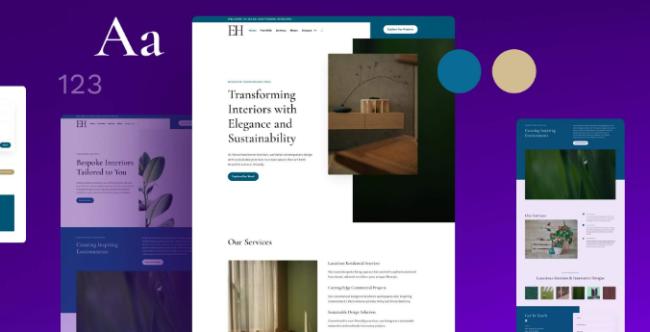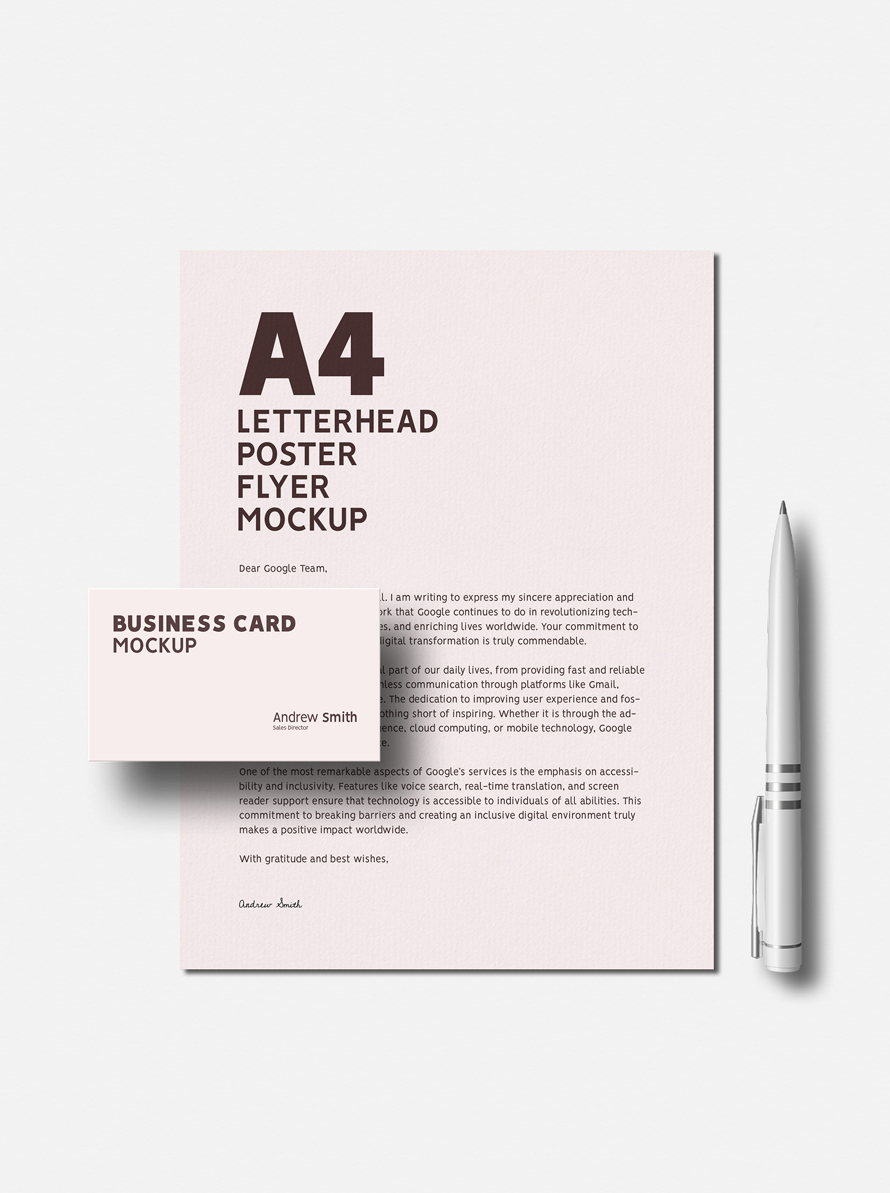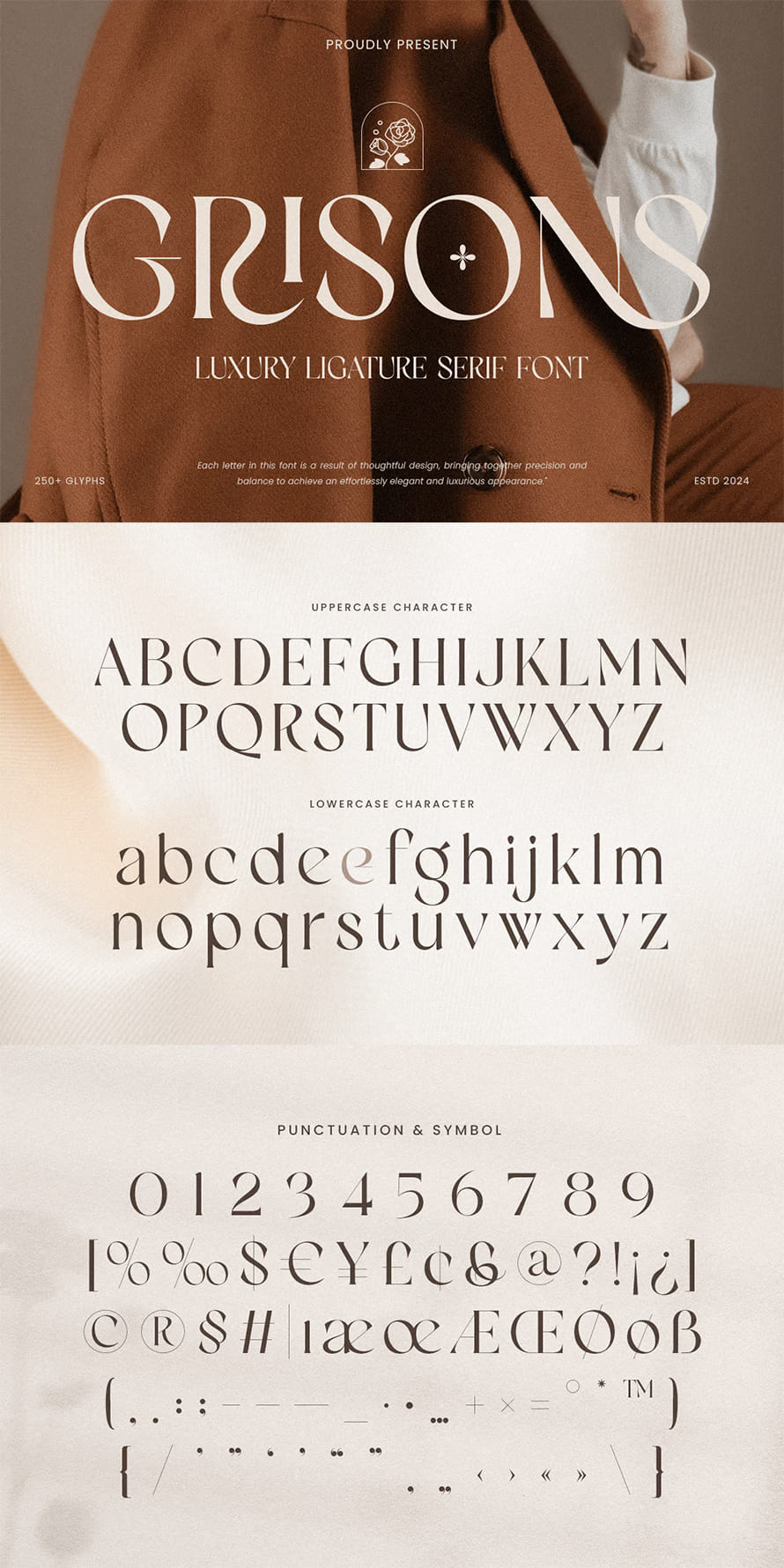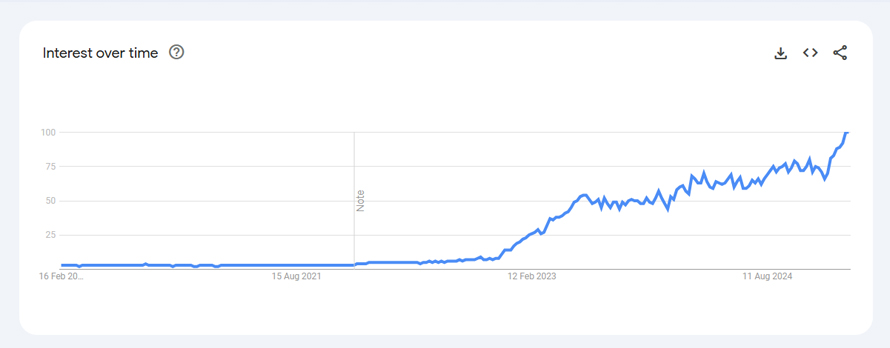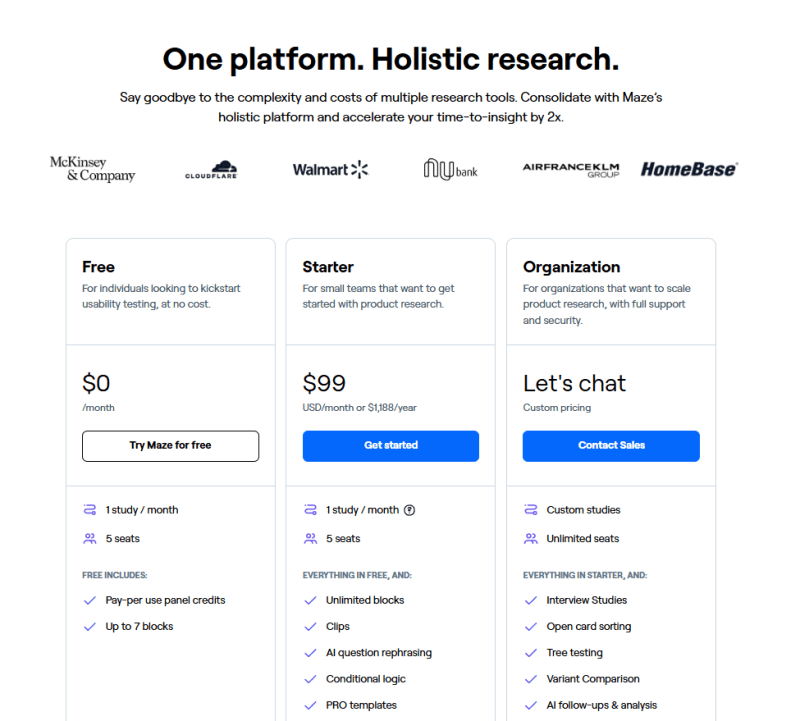Startup WordPress themes are pre-designed templates tailored to meet the needs of new businesses. These themes are built with startups in mind, offering features like responsive design, easy customization, and integration with essential tools like email marketing services, analytics, and e-commerce platforms. Whether you’re launching a tech company, a creative agency, or an online store,… Continue reading 30 Best Startup WordPress Themes 2025
Category: Design
Design is the method of putting form and content together. Design, just as art, has multiple definitions; there is no single definition. Design can be art. Design can be aesthetics. Design is so simple, that’s why it is so complicated.
Kate Moran about UX Leadership and AI in UX Research
“I think UX professionals are better qualified for leadership roles than they (often) realize. That empathy and passion we have for users is just as important when applied to the business and the people you’re responsible for.” – Kate Meet Kate Moran – a globally recognized UX expert, UX researcher, and a Vice President at… Continue reading Kate Moran about UX Leadership and AI in UX Research
Free Minimal A4 Letterhead Mockup with Business Card
Looking for a free stationery mockup to showcase your brand identity in a professional way? This minimal style free A4 letterhead mockup with business card mockup is the perfect solution! Whether you’re a designer, marketer, or business owner, this high-quality stationery mockup allows you to present your branding designs effortlessly. An A4 letterhead mockup is… Continue reading Free Minimal A4 Letterhead Mockup with Business Card
30 FREE Flag Banner Mockups For Promoting Brands
In today’s fast-moving digital world, grabbing your audience’s attention is tougher than ever. With so many brands competing for visibility, businesses need fresh and visually engaging ways to stand out. One highly effective approach is using flag banner advertisements—a dynamic tool for promoting brands, products, and events. When combined with flag banner mockup PSDs, these… Continue reading 30 FREE Flag Banner Mockups For Promoting Brands
UserTesting Pricing in 2025: How Much Does UserTesting Cost?
❕ Important note: This review site presents information relevant for researchers, not for participants in the user panel. Key Takeaways 💸 UserTesting delivers real-time user insights, but its high costs, unclear pricing, and seat limitations make it an expensive choice. 📉 UserTesting’s pricing is not publicly listed, forcing potential buyers into sales calls with unclear cost… Continue reading UserTesting Pricing in 2025: How Much Does UserTesting Cost?
21 Best Luxury Serif Fonts
Luxury fonts have long been synonymous with sophistication and timeless appeal, making them a cornerstone of high-end design. When it comes to creating a sense of elegance and exclusivity, serif fonts stand out as a top choice for designers. Their refined strokes and classic structure exude a sense of tradition while seamlessly adapting to modern… Continue reading 21 Best Luxury Serif Fonts
Post-Launch Optimization: 5 Steps to Long-Term Website Success
Discover why your post-launch optimization strategy might be failing and learn how to implement a data-driven approach for continuous improvement. I’ve witnessed this scenario countless times: organizations invest substantial resources into launching a new website, only to neglect post-launch optimization once it goes live. This oversight is a critical mistake that can significantly undermine the… Continue reading Post-Launch Optimization: 5 Steps to Long-Term Website Success
How to Include AI in Your Graphic Design Workflow
The popularity of AI design (and other search-related terms) is at an all-time high now. For the past two years, search interest for this keyword has skyrocketed, with a growth rate of 488% from Jan 2023 to Feb 2025. This means that more and more professionals are leveraging AI design tools for their graphic design… Continue reading How to Include AI in Your Graphic Design Workflow
UX Conference June Announced (May 31 – Jun 13)
How will the Virtual Event work? Meetings will take place using the video conferencing tool Zoom, collaboration tools (such as group document editing and whiteboarding tools), and the social discussion tool Slack. You’ll also be able to use Slack before, during, and after the event to participate in social events and network with other… Continue reading UX Conference June Announced (May 31 – Jun 13)
200+ FREE Female Hair Brushes for Designers
In the world of digital photography and graphic design, hair retouching is one of the most intricate and essential skills. Whether you’re working on a fashion editorial, a portrait, or a commercial advertisement, well-retouched hair can elevate an image from good to stunning. Photoshop, the industry-standard tool for photo editing, offers a wide range of… Continue reading 200+ FREE Female Hair Brushes for Designers
Designing for AI Engineers: UI patterns you need to know
[unable to retrieve full-text content] A reference article with guiding principles, patterns, and personas to help designers become more AI literate. As the Head of Design at Modular AI, my team is going from 0 to 1 on a lot of AI products and workflows this year. Even though I’ve been designing for developers for… Continue reading Designing for AI Engineers: UI patterns you need to know
Maze Pricing in 2025: The Best User Testing Tool for Its Price?
Key Takeaways 💰 Maze pricing ranges from a free plan to custom pricing, with the Starter plan at $99/month. 🚧 Maze testing capabilities are limited in lower-tier plans, especially for advanced features like interview studies and mobile testing. 🚨 Users have reported bugs, mobile testing issues, and unreliable heatmaps affecting research quality. 🚩Maze competitors like UXtweak… Continue reading Maze Pricing in 2025: The Best User Testing Tool for Its Price?
The Y2K Aesthetic: Why This Retro-Futuristic Look Is Back in Style
The Y2K aesthetic is back and it’s taking over fashion, graphic design, and even our digital spaces. It’s nostalgic, futuristic, and chaotic all at once. But what makes this turn-of-the-millennium aesthetic so appealing in 2025? And how can you incorporate it into your own designs? Let’s dive into the world of Y2K and see why… Continue reading The Y2K Aesthetic: Why This Retro-Futuristic Look Is Back in Style
Mastering the Art of Writing a Graphic Design Resume: A Comprehensive Guide
A graphic design resume is not just a summary of your work experience; it is a visual representation of your creativity, skills, and design expertise. As a graphic designer, your resume should be a masterpiece that showcases your unique style and demonstrates your ability to communicate visually. This article will provide you with a step-by-step… Continue reading Mastering the Art of Writing a Graphic Design Resume: A Comprehensive Guide
SWOT Analysis
Summary: A SWOT analysis helps teams understand how well a product, service, or organization is positioned in the market to serve its customers. A company’s ability to survive or thrive will depend not just on meeting user needs but on doing so more effectively than its competitors. This article covers a popular framework that provides… Continue reading SWOT Analysis
When a collaboration is not a collaboration
[unable to retrieve full-text content] Prisoner’s dilemma in digital product design. Continue reading on UX Planet »
25+ Luxury Serif Fonts for Elegant Branding & Design
Written by Muhammad Faisal• January 30, 2025• 10:07 pm• Fonts • One Comment Luxury serif fonts are the perfect choice for designers seeking sophistication and elegance in branding. These high-end typefaces exude class and professionalism, making them ideal for premium logos, packaging, fashion branding, and upscale publications. With their refined details, sharp serifs, and balanced… Continue reading 25+ Luxury Serif Fonts for Elegant Branding & Design
35+ Luxury Logo Mockups – Free and Preimum
A stunning logo is the face of your brand, and presenting it with a professional touch can make all the difference. Luxury logo mockups offer a high-end look, helping designers, businesses, and entrepreneurs showcase their logos in realistic and stylish settings. Whether you’re working on branding, packaging, or marketing materials, using high-quality mockups ensures your… Continue reading 35+ Luxury Logo Mockups – Free and Preimum
500 Free Photoshop Tattoo Brushes For Creative Expression
Photoshop tattoo brushes are a powerful tool for digital artists and designers, offering a way to simulate the intricate, bold, and artistic nature of tattoos without the need for a needle or ink. These brushes allow users to apply detailed, realistic tattoo designs directly onto digital canvases, providing endless possibilities for creative expression. Tattoo brushes… Continue reading 500 Free Photoshop Tattoo Brushes For Creative Expression
The Life Before Me: Exploring Legacy Through Editorial Design
Discover Jaqueline Santos’ zine, “The Life Before Me,” a blend of editorial design, graphic design and personal storytelling. Editorial design has the unique power to weave personal stories into visual narratives. This is beautifully demonstrated in The Life Before Me, an experimental zine by Jaqueline Santos. Through this project, Santos delves into her parents’ lives before… Continue reading The Life Before Me: Exploring Legacy Through Editorial Design
Top 25 Customer Analytics Software & Tools in 2025
Key Takeaways 📊 Customer analytics software helps businesses collect and analyze user data to improve digital products and understand customer behavior. 🛠️ Different tools offer features such as session recording, heatmaps, and customer segmentation to track interactions and find areas for improvement. 💰 Budget-friendly choices are available, with many tools providing free plans or trials,… Continue reading Top 25 Customer Analytics Software & Tools in 2025
The State of Design Teams: Could a Fractional Design Lead Be a Partial Answer?
The role of design leaders is under threat. Companies are cutting back, and senior designers are often first to go. But there may be a solution worth considering. I’ve noticed a concerning shift in how organizations are handling their design budgets lately. You’re probably seeing it too – companies are tightening their belts, and unfortunately,… Continue reading The State of Design Teams: Could a Fractional Design Lead Be a Partial Answer?
New Fonts Free Download
Free fonts are essential in design, as typography shapes the overall look and feel of any project. Choosing the right font can greatly improve readability and make your work stand out. Whether you’re working on a website, branding, or social media graphics, selecting the best typeface enhances both style and effectiveness. Fortunately, there are plenty… Continue reading New Fonts Free Download
150 Free Photoshop Blood Brushes To Use In Your Artworks
Blood brushes for Photoshop are a fantastic way to add intensity, drama, and raw emotion to your digital art. Whether you’re designing horror-themed artwork, creating a gritty visual for a video game, or simply want to experiment with splatters and stains, these brushes can help you achieve realistic, eerie effects with ease. Blood brushes are… Continue reading 150 Free Photoshop Blood Brushes To Use In Your Artworks
